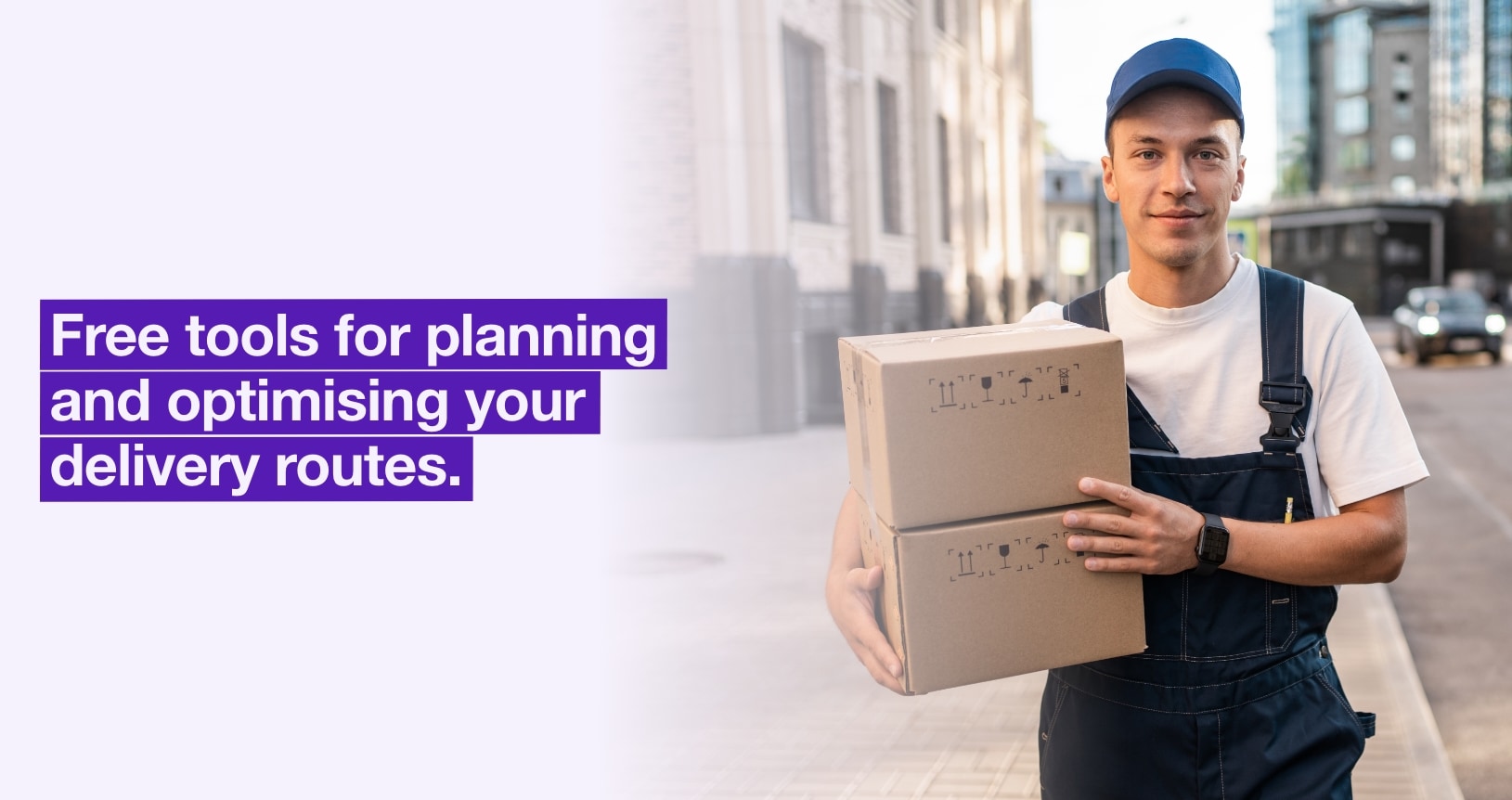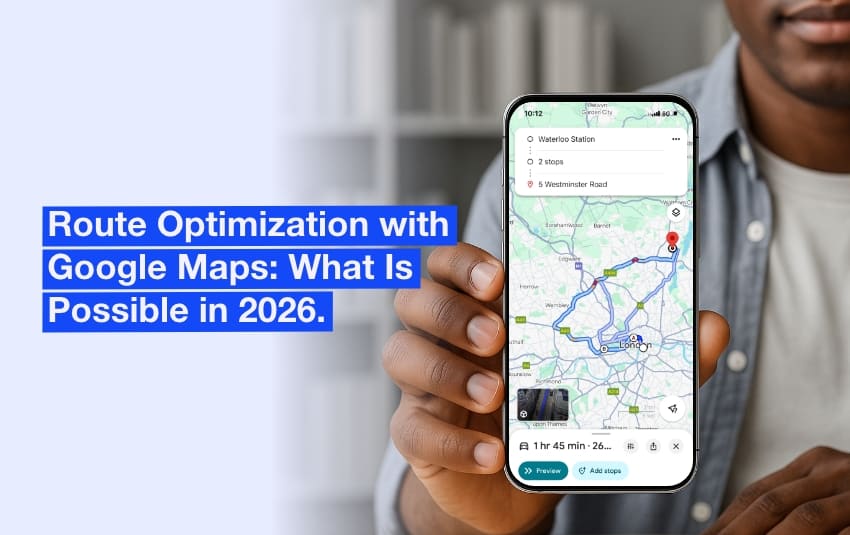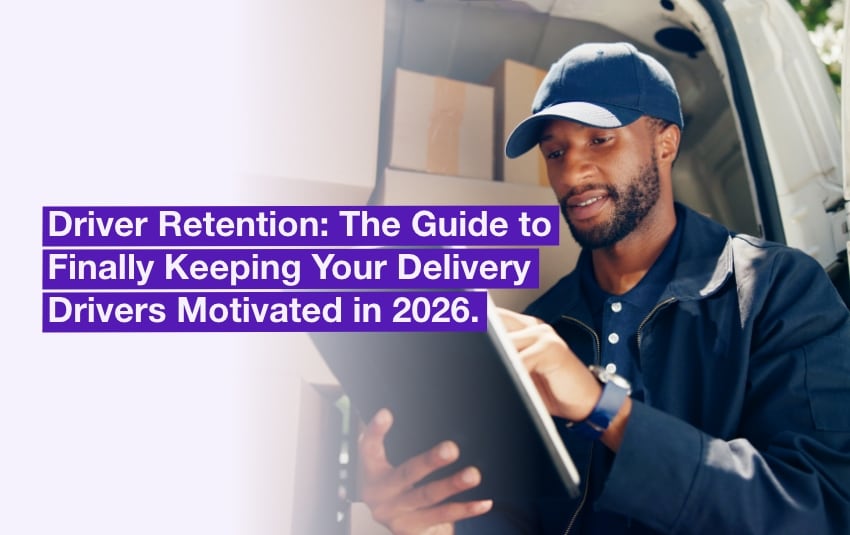Optimise Your Deliveries: Free Tools to Plan Your Routes
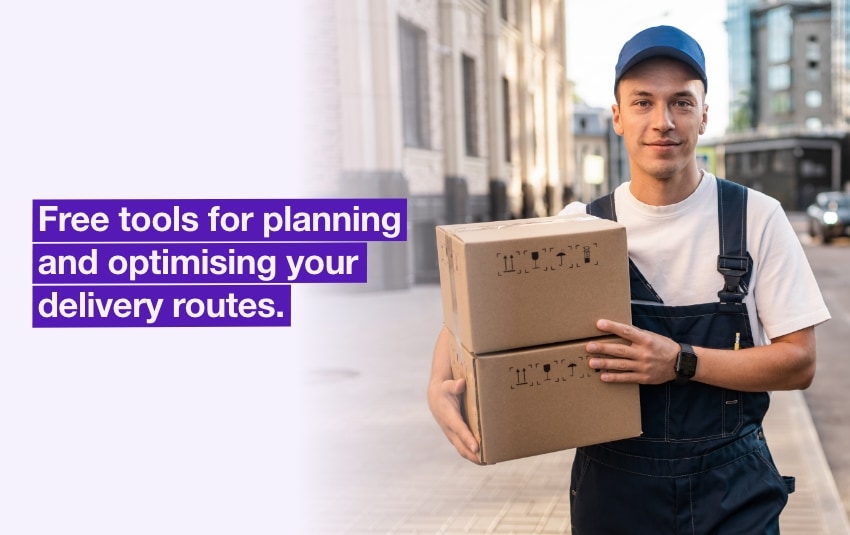
The management of delivery routes can often be complex and difficult. Fortunately, there are solutions to make this process simpler and more efficient, without spending a penny!
We take a look at the advantages, features and limitations of these free software packages to help you make the most of them.
- Why should I use route planning software?
- The essential features of delivery software
- The advantages of free route planner
- The limitations of free delivery route software
- Free route planning solutions
- Paid tools: an alternative to free solutions
Free route planning is the first step towards optimising your logistics operations. Free tools such as Google Maps enable SMEs to improve their productivity at no extra cost.
Why Should I Use Route Planning Software?
If you’re wondering why it’s so important to use route optimisation software, here are a few points to enlighten you.
If you’re wondering why it’s so important to use route optimisation software, here are a few points to enlighten you.
Planning your delivery routes efficiently has a number of advantages:
- Reduce costs: Minimise the number of kilometres driven and optimise the use of your vehicles to save on fuel and maintenance.
- Save time: Organise your routes to avoid traffic jams and respect delivery windows.
- Improve customer service: Guarantee on-time, reliable deliveries, increasing customer satisfaction and loyalty.
But route planning can be complex and involves juggling multiple variables:
- Optimum routes
- Time windows
- Capacity of vehicles
- Delivery priorities
Without the right tools, these tasks can quickly become unmanageable. That’s where free (or paid) route optimisation applications help.
The Essential Features of Delivery Software
When considering the use of a free route-planning application or software, it is important to check that it includes the essential features needed to organize deliveries properly. A well-designed tool helps save time, reduce errors, and improve customer satisfaction.
Here are the features to look at closely:
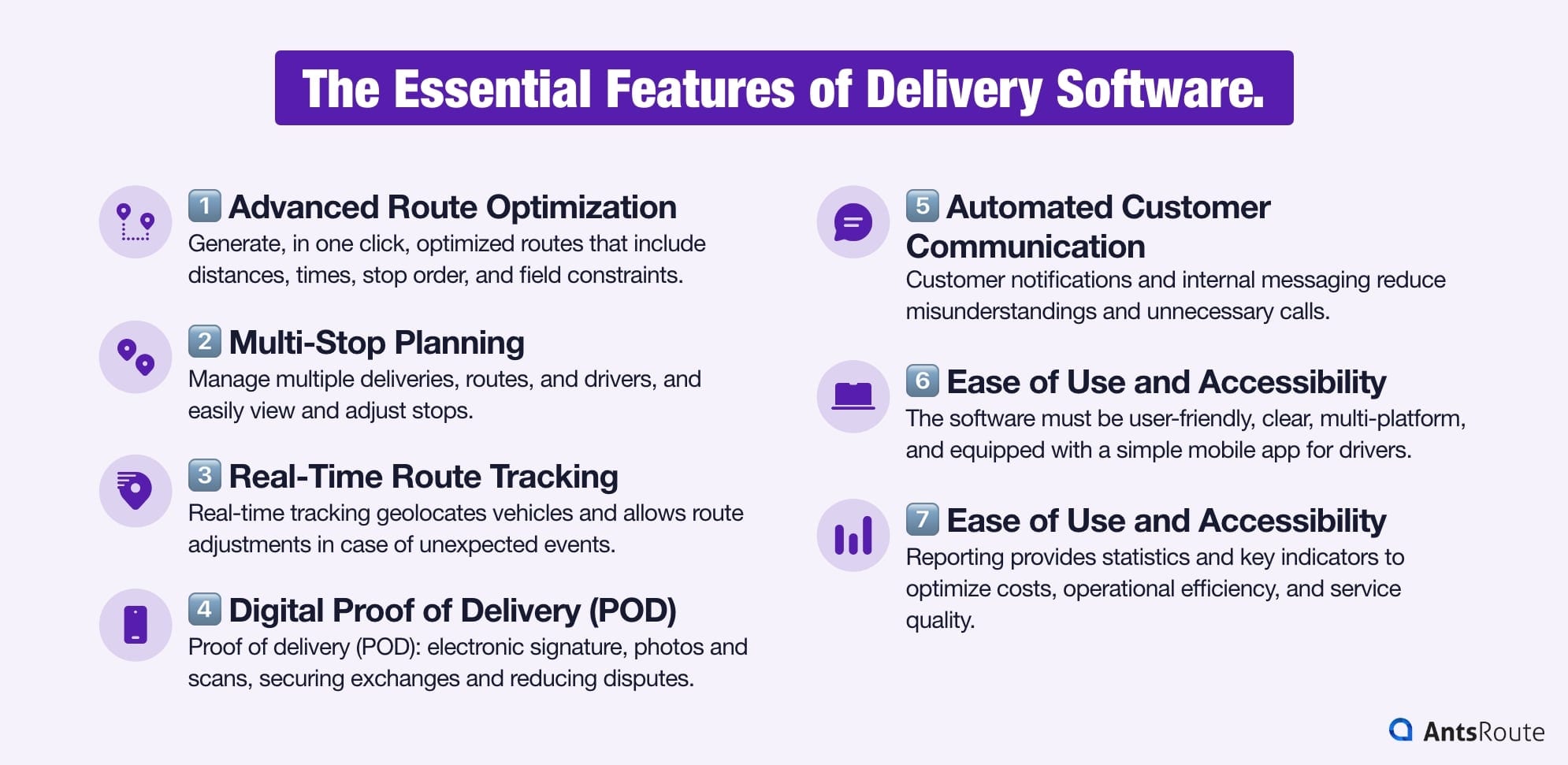
The 7 essential features of delivery software.
1. Advanced Route Optimization
The first expectation for delivery software is its ability to propose coherent routes. Ideally, the tool should allow you to:
- automatically calculate an optimized route, taking into account distances, travel time, and stop order;
- reorganize the order of stops to reduce the number of kilometers traveled;
- optionally consider certain field constraints (time windows, customer priorities, traffic restrictions, vehicle capacities, areas to avoid…);
- offer one-click optimization to minimize the time spent creating routes.
☝️ In many free tools, these features remain basic, but they still provide valuable assistance compared to manual planning.
2. Multi-Stop Planning
Even with free route-planning solutions, it is useful to manage multiple deliveries within the same trip:
- adding and organizing several delivery points in a single route;
- ability to manage several routes and several drivers simultaneously;
- clear visualization of the sequence of stops, stop durations, pickup and drop-off addresses;
- ability to easily modify stops in case of last-minute changes.
☝️ Some free applications, however, limit the number of addresses per route, which can become restrictive.
3. Real-Time Route Tracking
Real-time tracking is not always available in free tools, but when it is, it provides real added value:
- geolocation of vehicles on an interactive map to know their exact position;
- ability to adjust the route dynamically in case of unexpected events (traffic, delays, cancellations).
Even a simplified tracking version can help better understand what’s happening in the field.
4. Digital Proof of Delivery (POD)
To secure exchanges with customers, more and more solutions include proof-of-delivery features:
- capturing electronic signatures directly on a smartphone or tablet to confirm deliveries;
- timestamped photos, barcode scans, or QR-code scans as proof of drop-off;
- automatic archiving of these proofs in the route history.
☝️ These options are not always available in free route-planning software, but they quickly become useful as delivery volumes increase.
5. Automated Customer Communication
Delivery software can also facilitate communication between all stakeholders:
- sending automatic notifications to customers regarding the status of their delivery: delivery confirmation, estimated arrival time, delivery in progress, delay alerts;
- simple messaging between drivers and dispatchers to share real-time information.
☝️ Even basic communication features help reduce incoming calls and misunderstandings.
6. Ease of Use and Accessibility
For the tool to be used daily, ergonomics play a key role:
- a clear interface with menus that are easy for dispatchers and planners to understand;
- multi-platform compatibility (computer, tablet, smartphone);
- a mobile app for drivers, enabling them to access the route directly in the field.
☝️ A free route-planning solution must remain easy to use, even for teams with limited digital experience.
7. Performance Analysis and Reporting
Finally, some software offers reporting features even in their free versions:
- reports and statistics on delivery times, distances traveled, or number of deliveries completed;
- tracking a few key indicators to identify areas for improvement: cost per delivery, average service time, punctuality, driver productivity.
☝️ These insights help better understand route efficiency and identify optimization opportunities, even with a free solution.
With these features, you maximize efficiency, reduce costs, and improve customer service, even with a free solution.
The Advantages of Free Route Planner
Free route planning tools offer a number of significant advantages:
- Cost savings: No licence or subscription fees.
- Accessibility: These tools are often simple to use and set up. You don’t need to spend hours on training, and their intuitive interface means they can be adopted quickly from day one.
- Adaptability: Perfect for small and medium-sized businesses with limited delivery requirements.
The Limitations of Free Delivery Route Software
Although free delivery route software is attractive for its zero cost, it often has limitations:
- Basic features not always sufficient: Free versions often offer basic tools, but lack the advanced options needed for full optimisation. Complex route management, real-time planning and stock management may be limited or not available at all. For a small business with a few stops a day, this may still work. But for larger companies with 150 to 200 stops, these tools quickly become obsolete.
- Restrictions on deliveries and vehicles: Free software imposes limits on the number of deliveries or vehicles you can track.
- Limited technical support: No professional assistance for technical difficulties. Users often have to manage with online resources or forums.
- Security concerns: Free solutions don’t always guarantee the same level of protection as paid versions. This can expose your sensitive information and that of your customers to greater risks.
- Lack of flexibility for the future: If your business is experiencing rapid growth or frequent changes in its requirements, free software may not be flexible enough to adapt to these changes.
To sum up, free delivery route software is useful temporarily, but its limitations can slow down your growth and efficiency. For optimum management, it’s advisable to invest in a more comprehensive, long-term solution.
Free Route Planning Solutions: 2025 Update
There are a number of free tools available for route planning, each offering unique features tailored to different needs. Here’s an overview of the most popular:
Google Maps: A must-have for everyday and business planning. Google Maps lets you plan routes with multiple stops, display vehicle positions in real time and share routes. Its intuitive interface makes it an invaluable tool for both personal and professional journeys.
Waze: Known for its real-time traffic information and community alerts, Waze helps to optimise journeys by avoiding traffic jams. Ideal for adjusting routes according to traffic conditions.
RouteXL: Simplifies route planning by quickly optimising several stops. Simply enter your addresses, and RouteXL generates the most efficient route in the blink of an eye.
Speedy Route: Free application that calculates the most efficient route to visit several destinations before returning to the starting point. If you need more, you can add up to 9,999 stops by paying a subscription fee.
Here is a comparative table of features (2025 update):
| Features | Google Maps | Waze | Route XL | Speedy Route |
| Number of free stops | Unlimited | Unlimited | 20 stops a day | 10 routes per day |
| Live tracking | Yes, with traffic updates | Yes | No | No |
| Possibility of adding several routes | No | No | Yes | Only with the paid version |
| Proof of delivery | No | No | No (in free version) | No |
| Automated notifications | No | No | No | No |
| Analysis of performance | No | No | No | No |
| Additional functions | Sharing routes | Community alerts | Quick planning | Detailed routes |
Table of features of free route planning solutions.
In summary, Google Maps is suitable for individual drivers and small businesses (fewer than 10 deliveries per day), while RouteXL and Speedy Route are better for more complex routes.
Paid Tools: an Alternative to Free Solutions
If you have already used free tools to plan your delivery routes, you have probably noticed their limitations, especially if you handle 100–150 deliveries per day. To go beyond basic features and ensure smoother, more efficient operations, paid software solutions offer undeniable advantages.
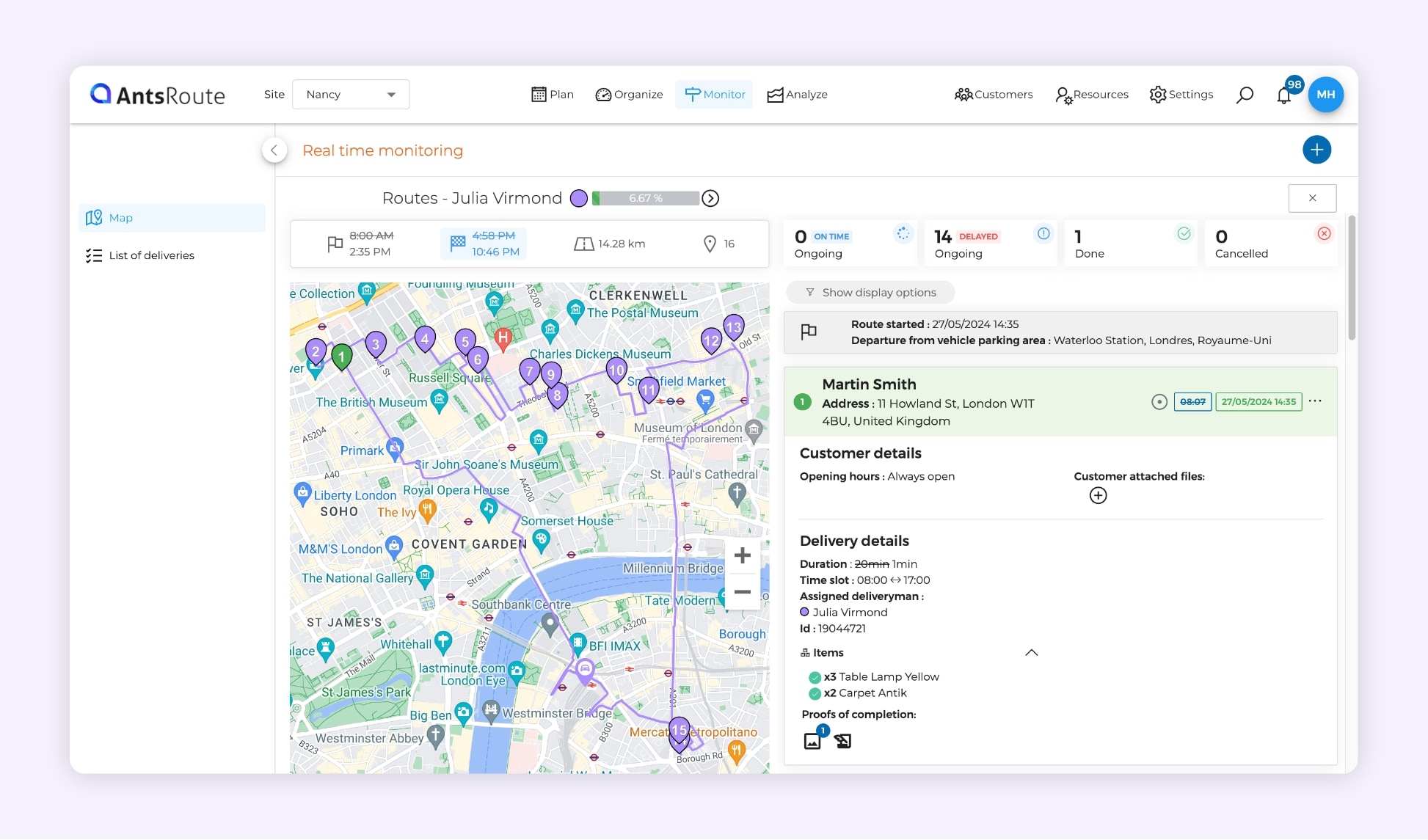
AntsRoute route planning software.
AntsRoute, for example, offers much more than just a map. Here’s an overview of its features:
- Analysis of performance: Get detailed reports and in-depth statistics on each delivery to identify areas for improvement.
- Integration with other systems: Easily connect AntsRoute with your ERP, CMS or invoicing software, avoiding data re-entry.
- Optimise available resources: Plan your deliveries according to time and geographical constraints, while taking into account the specific characteristics of your vehicles. This reduces empty runs and CO2 emissions.
- Unexpected event management: Adjust your schedules in real time to deal with unexpected events.
- Customer support: Benefit from dedicated customer service, tutorials and a help centre for fast, efficient technical assistance.
Free route planning is an accessible and effective solution, particularly for small businesses with limited needs. Tools such as Google Maps can improve your logistics efficiency at no extra cost. However, for more complex operations, paid software offers considerable advantages.
Don’t wait any longer to try out our AntsRoute solution, available from 17 euros per vehicle per month.
➡️ Free 7-day trial
➡️ Book a demo
FAQ: Your questions about free route planning
The best free tools for route planning allow you to create simple routes, organize a few deliveries, and optimize basic trips. They are suitable for small teams, but quickly show their limits once the volume exceeds 50 to 150 deliveries per day.
No. Free tools are generally not designed to handle more than 150 daily deliveries. At this level, a professional solution becomes essential to optimize routes, manage unforeseen events, and maintain a high level of service quality.
It is recommended to switch to a professional solution as soon as your needs go beyond basic features: more than 150 deliveries per day, the need for real-time tracking, integrations (CRM, e-commerce, WMS), or advanced optimization to reduce costs and improve productivity.
WRITTEN BY
Florine Martin
Florine has been a freelance web copywriter since 2021, writing for a variety of clients in a range of sectors. Since the beginning of 2024, she has been writing articles about logistics for our company, AntsRoute.
Free 7-day trial | No credit card required
Contenu
- Why Should I Use Route Planning Software?
- The Essential Features of Delivery Software
- 1. Advanced Route Optimization
- 2. Multi-Stop Planning
- 3. Real-Time Route Tracking
- 4. Digital Proof of Delivery (POD)
- 5. Automated Customer Communication
- 6. Ease of Use and Accessibility
- 7. Performance Analysis and Reporting
- The Advantages of Free Route Planner
- The Limitations of Free Delivery Route Software
- Free Route Planning Solutions: 2025 Update
- Paid Tools: an Alternative to Free Solutions
- FAQ: Your questions about free route planning


